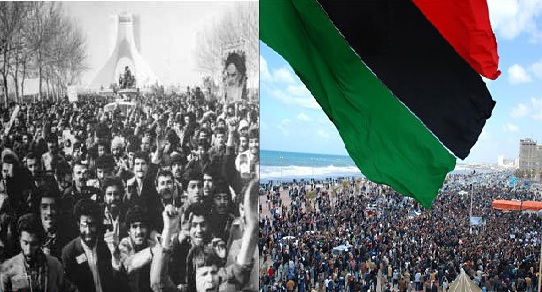The news that both Muammar Gaddafi’s son Saif al-Islam and Abdullah al-Senussi, Libya’s former intelligence chief, were captured alive last week was both a surprise and a relief. There would be no shaky cell phone video of the former Libyan regime’s strongmen dragged through the streets and summarily executed. While it is not yet clear what kind of trial awaits both men, at the very least they would be spared the barbaric outcomes that befell Qaddafi and another son, Muatassim.
The recent restraint exercised by the new Libyan government should be commended. The emotional impulse for vengeance is understandable in societies freeing themselves from years of oppression. Yet the conflation of vengeance and justice can lead to a dangerous and downward cycle of brutality that undermines the very social change that the oppressed sought. They are distinct concepts and recognizing this is critical for the long term development of a better society. The ultimate success of the Arab uprisings will hinge on new governments recognizing this difference.
While the drawn out slaying of Muammar Qaddafi in Libya is arguably the most extreme example of vengeance prevailing over justice, Egypt’s former leader Hosni Mubarak was subjected to ritualistic humiliation in a cage as he faced a trial sorely lacking in due process.
Further, Egypt’s new military rulers are increasingly taking their cues from the old regime with arbitrary arrests, repression of dissent and the recent beatings and tear gas used against protesters in symbolic Tahrir Square, in scenes ironically similar to those in the popular uprising that began on January 25 of this year. The trend is alarming.
For a demonstration of the ultimate consequences of choosing vengeance over justice, one only needs to look back at the region’s last great revolution — the 1979 Iranian revolution.
In the aftermath of Iran’s revolution in 1979, which ousted the former Shah of Iran’s monarchist rule, the emotional desire for vengeance prevailed. While the persecution of Iran’s citizenry by the Shah’s operatives had been savage (jars of severed fingers and scraps of skin caught in sharp machinery were among the horrors uncovered by journalists in the torture chambers of SAVAK, the Shah’s intelligence apparatus) the resulting treatment of those former Shah operatives and anyone perceived as a sympathizer was equally so.
Summary executions were the order of the day and fair trials seen as an exceptional measure. Except for the Shah himself and certain other high ranking operatives who fled the country, no one from the defeated government — officials, armed forces, police, and intelligence officers — was safe. The new government rarely intervened in the actions of angry mobs seeking retribution against members of the previous regime.
Eventually, like a cancer, the cycle of retribution spread beyond simply those directly associated with the Shah. Ethnic minorities, once allied to the Revolution, became an eventual target –scores of Iran’s Kurds, Turkmens and Arabs were summarily executed on suspicion of endangerment to national security.
Tensions mounted between those that envisioned a more just, lawful state and those motivated primarily by revenge. Unfortunately, despite the efforts of the former, the latter prevailed.
And the effects are lasting. The methods of torture learned from the Shah’s SAVAK are still used in Iran’s prisons. The ongoing human rights crisis is marked by the same practices of secret executions and forced disappearances that sparked widespread anger under the monarchist regime. Crowds of hundreds gather in town squares in present-day Iran to witness executions of convicted persons in a carnival like atmosphere. These are the hallmarks of a brutalized population.
Iran, and its 1979 Revolution, has often been analogized to the ongoing developments in the Arab world for the wrong reasons — particularly by those playing to western fears of an “Islamification” of the underlying social movements. In reality, the original sin of the Iranian revolution was the new regime’s perpetration of vengeance instead of promised justice.
While other conflict-worn nations like the former Yugoslavia, Rwanda, Sierra Leone and South Africa underwent the dual processes of prosecution and reconciliation to set their nations on the course of right, Iran is a case of transitional justice gone horribly wrong. Far from any attempt at justice or reconciliation, the eventual victors of the Iranian Revolution dealt vengeance to their former oppressors, and in doing so, morphed into an equally, if not more, oppressive mold of their predecessors.
Today’s Libya should draw less from the Iran of 1979, where leadership stoked the flames of a revenge seeking populace, and more from examples of other transitioning nations where, sometimes with the assistance of the international community, the rule of law prevailed. Libya’s new rulers could choose to foster a cycle of “an eye for an eye” and cloak it as justice. But rather than leaving everyone blind, there is a better course.
Upon the overthrow of apartheid in South Africa, Nelson Mandela said “This is no time to celebrate petty revenge.” New leadership in the Arab world should heed the advice of this great leader. That the lives of the younger Qaddafi and al-Senussi were spared is a good first step.
Source: http://www.huffingtonpost.com/gissou-nia/iran-libya-justice_b_1116675.html

